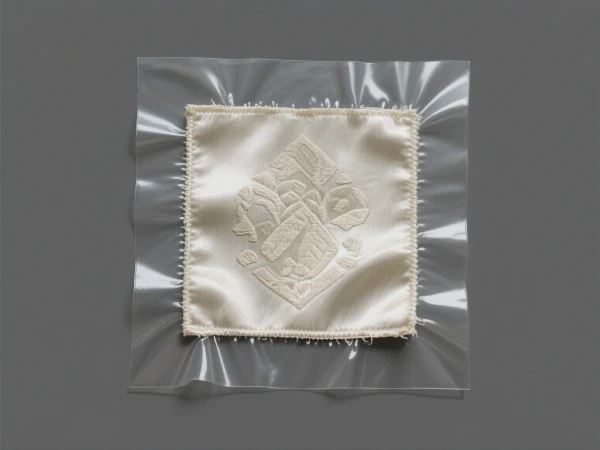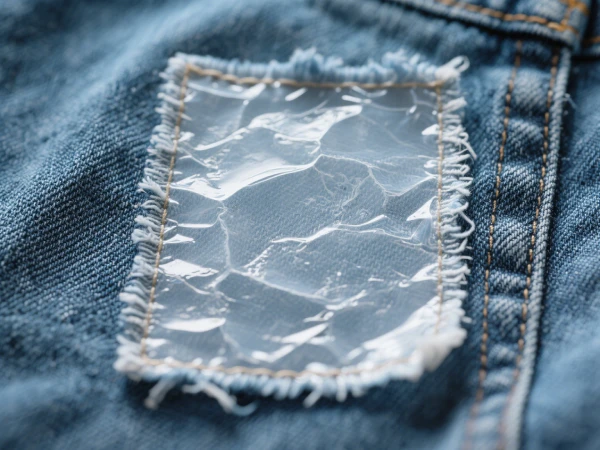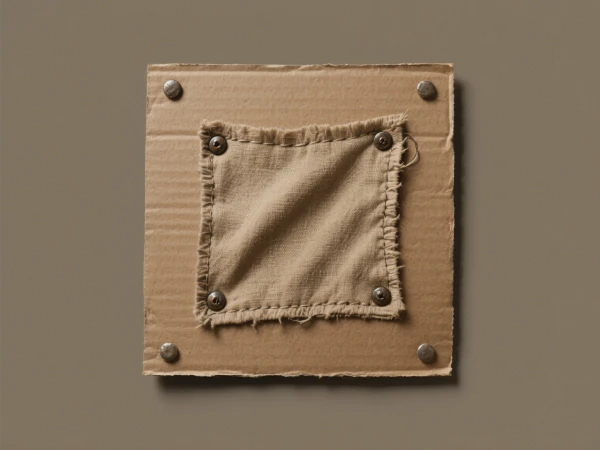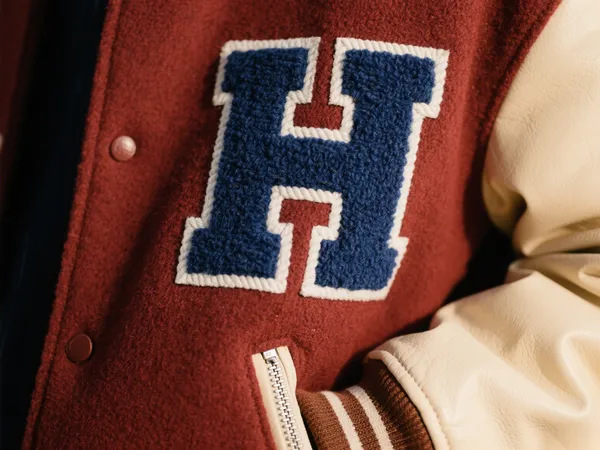Patches sind ein zeitloses Accessoire für Mode, Branding und Identifikation. Ob Pfadfinderabzeichen, Militärabzeichen, Biker-Logo oder modisches Statement – ein oft übersehener, aber wichtiger Aspekt eines Patches ist die Patch-Unterstützung. Während das Design ins Auge fällt, sorgt die Rückseite dafür, dass der Aufnäher sicher auf der Oberfläche haftet.
Choosing the right Patch-Unterstützung kann sowohl Funktionalität als auch Aussehen erheblich beeinflussen. In diesem umfassenden Leitfaden untersuchen wir die Arten von Patch-Trägern, die besten Anwendungsfälle für jeden, und So wählen Sie die richtige Patch-Unterlage aus für Ihre spezifischen Bedürfnisse.

Was ist Patch-Backing?
Die Rückseite eines Flickens ist das Material oder der Klebstoff, der auf der Rückseite des Flickens angebracht ist. Diese Schicht bestimmt, wie der Flicken angebracht wird – aufgenäht, aufgebügelt, aufgeklebt oder mit Klettverschluss auf ein Kleidungsstück oder Accessoire.
Eine gut gewählte Flickenrückseite bietet Haltbarkeit, Benutzerfreundlichkeit und Kompatibilität mit der Oberfläche, auf die sie aufgebracht wird. Egal, ob Sie eine Bekleidungsmarke, einen Uniformlieferanten oder einen Heimwerker betreiben, das Verständnis der Optionen kann Ihnen helfen, die richtige Wahl zu treffen.
Gängige Arten von Patch-Trägern
Schauen wir uns die beliebtesten genauer an Arten von Patch-Trägern und ihre Funktionen.
1. Rückseite zum Aufnähen
Dies ist die traditionelle und haltbarste Option. Aufnäher haben eine einfache Stoffrückseite und werden von Hand oder maschinell auf Kleidungsstücke genäht.
Geeignet für:
- Jacken, Jeans, Rucksäcke
- Leder oder dicke Stoffe
- Permanent application
Vorteile:
- Extrem langlebig
- Waschbeständig
- Professionelles Aussehen
Nachteile:
- Zeitaufwendig
- Erfordert Nähkenntnisse
2. Aufbügelbare Rückseite
Aufbügelflicken gehören zu den gängigsten Optionen für den gelegentlichen Gebrauch und verfügen über einen wärmeaktivierten Klebstoff, der beim Bügeln am Stoff haftet.
Geeignet für:
- Baumwoll-, Polyestergewebe
- DIY-Kleidungsanpassung
- Schnelle Anwendung
Vorteile:
- Einfache Anwendung zu Hause
- Kein Nähen erforderlich
- Sauberes und ordentliches Finish
Nachteile:
- Weniger haltbar als genähte Flicken
- Nicht für hohe Temperaturen oder schwere Waschgänge geeignet
- Haftet nicht gut auf manchen Stoffen wie Leder oder Nylon

3. Klettverschluss (Haken und Schlaufe) auf der Rückseite
Flicken mit Klettverschluss lassen sich leicht entfernen und ersetzen. Ein Teil des Klettverschlusses ist auf den Flicken genäht, der andere Teil ist auf das Kleidungsstück genäht oder geklebt.
Geeignet für:
- Taktische Ausrüstung, Militäruniformen
- Hüte, Westen, Taschen
- Austauschbares Branding oder Identifikation
Vorteile:
- Wiederverwendbar und repositionierbar
- Vor dem Waschen leicht zu entfernen
- Ideal für Uniformen und Ausrüstung
Nachteile:
- Erfordert eine Klettbasis an der Kleidung
- Nicht so nahtlos im Aussehen

4. Abziehbare (klebende) Rückseite
Dabei handelt es sich um Aufkleber in Patchform – einfach das Trägerpapier abziehen und auf eine Oberfläche drücken.
Geeignet für:
- Temporäre Anwendungen
- Sammelalben, Notizbücher, leichte Bastelarbeiten
Vorteile:
- Extrem einfach anzuwenden
- Keine Werkzeuge oder Hitze erforderlich
Nachteile:
- Sehr geringe Haltbarkeit
- Nicht für waschbare Artikel geeignet
5. Kunststoffträger
Kunststoff wird häufig in Kombination mit anderen Trägermaterialien verwendet und sorgt für zusätzliche Stabilität und Halt, insbesondere bei großen oder komplizierten Flicken.
Geeignet für:
- Embroidered patches
- Formerhaltung
- Kombination mit Aufbügel- oder Aufnäher
Vorteile:
- Hilft, die Struktur aufrechtzuerhalten
- Sorgt für mehr Haltbarkeit
Nachteile:
- Kann sich auf Kleidungsstücken steif anfühlen
- Keine eigenständige Befestigungsmethode

So wählen Sie die richtige Patch-Unterlage aus
Berücksichtigen Sie bei der Auswahl der besten Patch-Unterlage die folgenden Faktoren:
✅ 1. Application Method
Fragen Sie sich: Wird dieser Patch zu Hause oder professionell angebracht? Bevorzugen Sie Methoden ohne Nähen?
- Wenn DIY Ihr Stil ist, zum Aufbügeln oder abziehen und aufkleben könnte ideal sein.
- Für professionelle Uniformen oder Ausrüstung, zum Aufnähen oder Klettverschluss ist angemessener.
✅ 2. Bestimmungsgemäße Verwendung
Berücksichtigen Sie die Bedingungen, denen der Patch ausgesetzt sein wird:
- Für den robusten Außeneinsatz: Klettverschluss oder zum Aufnähen Träger sind langlebig und zuverlässig.
- Für dekorative Anlässe: zum Aufbügeln funktioniert gut.
✅ 3. Stoffart
Nicht alle Trägermaterialien haften gut auf allen Stoffen.
- Verwenden zum Aufbügeln für Baumwolle und Polyester.
- Vermeiden Sie selbstklebende Rückseiten für Leder, Nylon oder dehnbare Stoffe.
- Entscheiden Sie sich für zum Aufnähen auf dicken oder empfindlichen Materialien.
✅ 4. Entfernbarkeit
- Möchten Sie den Patch häufig wechseln? Wählen Sie Klettverschluss.
- Brauchen Sie etwas Dauerhaftes? Wählen Sie zum Aufnähen oder zum Aufbügeln.

Tipps zum Anwenden und Verwalten von Patches
- Reinigen Sie die Oberfläche bevor Sie ein Pflaster auftragen.
- Wärme richtig nutzen bei Verwendung zum Aufbügeln (mittlere Hitze, kein Dampf).
- Sichere Kanten mit ein paar Stichen, wenn Sie sich Sorgen über langfristige Abnutzung machen – sogar bei Aufbügelflicken.
- Vermeiden Sie das Trocknen im Wäschetrockner Kleidungsstücke mit aufbügelbaren oder aufklebbaren Flicken, um die Lebensdauer zu verlängern.
- Erneut bügeln Flicken, wenn sie sich abzulösen beginnen – übertreiben Sie es jedoch nie, sonst besteht die Gefahr von Schäden.
Abschluss
Obwohl oft übersehen, Patch-Unterstützung ist ein entscheidendes Element, das bestimmt, wie effektiv und dauerhaft Ihr Patch haftet. Egal, ob Sie langfristige Nutzung, temporären Flair oder modulare Vielseitigkeit wünschen, es gibt die passende Trägeroption.
Von traditionellen zum Aufnähen für Haltbarkeit, zum Aufbügeln der Bequemlichkeit halber Klettverschluss für Anpassungsfähigkeit, Verständnis der Arten von Patch-Trägern Und So wählen Sie die richtige Patch-Unterlage aus stellt sicher, dass Ihr Patch nicht nur gut aussieht, sondern auch so lange hält, wie Sie ihn brauchen.
Da Sie nun mit allen Optionen vertraut sind, können Sie getrost die perfekte Patch-Rückseite für Ihr nächstes Projekt auswählen – sei es eine maßgeschneiderte Jacke, eine taktische Weste oder eine modische Tragetasche.



